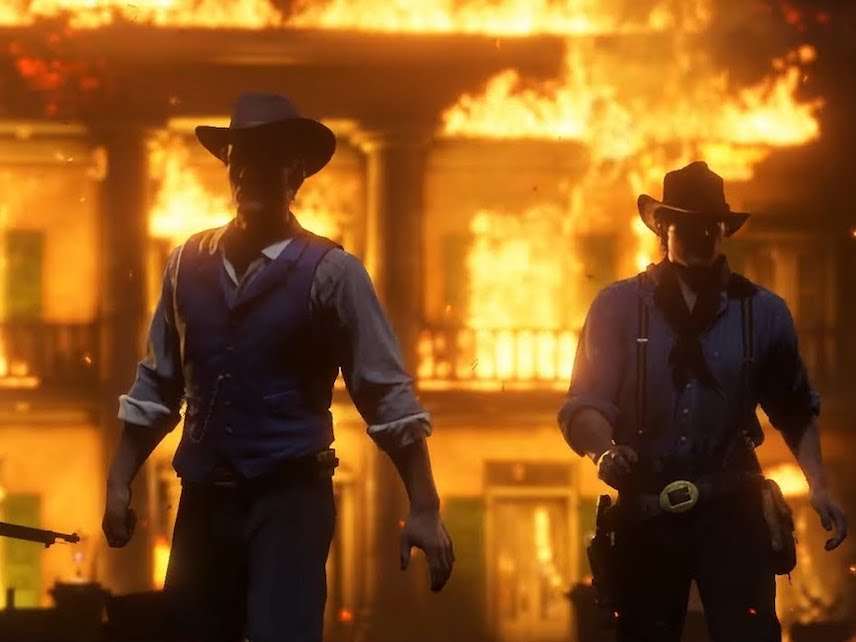Before Lil Nas X Cut a Track with Billy Ray Cyrus, Jimmie Rodgers Was Recording with Louis Armstrong
Friday A/V Club: There's no such thing as "pure country music," because country music has always been a mix.

Last month a trap song landed on the Billboard country chart, then was summarily dismissed from it. Lil Nas X's "Old Town Road (I Got the Horses in the Back)"—a track that mixes banjo samples and trap beats, with a video filled with Old West imagery—initially appeared simultaneously on the R&B, pop, and country charts, just like Elvis used to do. Then Billboard yanked it off the last of those, explaining that the song "does not embrace enough elements of today's country music to chart in its current version."
That decision earned a lot of well-deserved jeers. You certainly can draw your genre lines in a way that excludes "Old Town Road," but not without also excluding a bunch of other songs that have been climbing the country charts recently. As Alex Robert Ross put it in Fader:
"Old Town Road" has nothing to do with country's old school—it won't be confused for a Merle Haggard cover—but it's tough to pinpoint where, exactly, it deviates from "today's country music." I hear banjos; I see cowboys; I consider "bull ridin' and boobies," for better or worse, to be a more honest admission of modern country radio's obsessions than anything Dan + Shay can come up with. As FGL and dozens of imitators have shown, "today's country music" is clearly—sometimes embarrassingly—trying to embrace hip-hop. So, how does Lil Nas X differ from the rest of the artists on the country charts?
Ross goes on to ask why Billboard doesn't apply the same genre purism to, say, Thomas Rhett's "Look What God Gave Her," which currently sits at #12 on the country chart and, in Ross's words, is "a straight-up, middle-of-the-road, radio-pop song that has precisely nothing to do with 'today's country music' beyond a patronizing take on womanhood and a hammed-up adherence to Christianity." If you dropped Rhett's song into the '70s, people would tell you it sounds much more like disco than country. And while a disco/country crossover isn't hard to imagine—what do you think "9 to 5" was?—Rhett's effort, unlike Dolly Parton's, does not have the advantage of being particularly good.
At any rate, Lil Nas has now upped the ante: Last night he released a new mix of "Old Town Road" with some achy-breaky guest vocals from country singer Billy Ray Cyrus. I like it, and not just as a fun novelty.
OK, you say: Maybe it's good, but is it country? Well, you've got a choice. You can accept that the category we call "country music" is going to keep evolving and drawing on new influences, or you can erect fences around it in a way that leaves out vast swaths of what people who currently consider themselves country fans call country. The latter path isn't exactly new—one of the most popular country-fan exercises is defending Real Country Music against all those suspect pop influences that keep slipping in. I was known to do this myself in my teens and early twenties, when it was getting hard to distinguish country radio from "adult contemporary" schlock. But the stuff I called Real Country Music drew at least as heavily on outside influences as the stuff I was rejecting; it's just that it incorporated most of those influences before I was born, so I missed any controversies they caused. Country music has always been a mongrel, a place where banjos from Africa and steel guitars from the mid-Pacific could somehow combine to evoke images of Ozark moonshiners and Colorado cowboys.
These boundary-drawing exercises have always been kind of arbitrary, and creative people have been reaching across them for a long time. Way back in 1930, Jimmie Rodgers, sometimes called the Father of Country Music, did a recording session with jazz giant Louis Armstrong:
Since then, country music has found itself in bed with swing, with rhythm & blues, with soul, with funk, with rap. It has crossbred with punk rock, with mainstream pop, even with the chimurenga music of Zimbabwe. It's not remotely surprising to see it continuing its decadeslong dance with every kind of popular music.
(For past editions of the Friday A/V Club, go here.)


Show Comments (44)